
Setting up the perfect enterprise server system architecture seemed pretty straightforward just a few years ago.
“You went with [Sun Microsystems’] Solaris for the OS, put Oracle on top of Solaris for the database, used EMC for storage, and Cisco for routers,” Yankee Group senior analyst Dana Gardner told the E-Commerce Times.
Since then, this architecture formula has become outmoded for many businesses, many of which are seeking more cost-effective solutions to their server needs. Companies like Dell are offering relatively low-cost storage products, Microsoft is gaining traction in the RDBMS (relational database management system) market, and Linux is winning market share in at least some of the segments that Unix — often Solaris — used to dominate.
In fact, in recognition of Linux’ increased prominence, Sun began offering the open-source OS to its customers as an option for Intel x86 servers in 2002 and now even recommends using Linux in certain deployments. Solaris is still dominant in many mission-critical situations, but as Linux becomes increasingly robust and able to handle more complex multiprocessor setups and operations, will that change? Is Sun offering a product that will turn its golden child into an OS has-been?
Shifting Boundaries
At this point, Linux boxes are not responsible for much heavy lifting, Jean Bozman, research vice president of global enterprise server solutions at IDC, told the E-Commerce Times.
“Linux is making inroads into certain types of enterprise workloads, [such as] Web servers, e-mail, file and print, but if you’re doing mission-critical enterprise computing that requires more than four processors — running a stock exchange or supporting a network with thousands of end users — Unix carries the work,” Bozman said.
However, she added that, over time, Linux probably will begin to offer the features and functionality heretofore present only in Unix.
Indeed, “for the past several years, Linux has been expanding its capabilities up the server complexity stack,” Gardner of the Yankee Group said. “Before, Linux could run only on single- or dual-processor boxes. Now you’re starting to see people [networking] many of these low-cost boxes in a gridlike fashion to perform highly intensive computing tasks.”
He added that as Linux begins to offer more complex configurations and 64-bit processing (AMD’s new Opteron chip is the first Linux-compatible 64-bit processor), the push-and-pull between it and Solaris will intensify in the next three to five years.
Lull in the Action?
As Linux encroaches on Solaris’ turf, Solaris is doing some encroaching of its own. According to Bozman, businesses are starting to replace traditional mainframes, many of which are no longer sold actively, with Solaris-based machines.
Bill Moffitt, Sun’s group marketing manager for Solaris product management, told the E-Commerce Times that several regional banks have migrated from mainframes to Sun SPARC-based systems — and that Sun is in the process of negotiating deals with several larger banks as well.
Also, according to Gardner, Sun does not see Linux’ ascendance as something to fear. Rather, the company views the current period in high-tech evolution, with its focus on cost savings, as a lull preceding a massive ramp-up in computational and data-storage needs.
“Sun is banking that the level of complexity — the number of nodes needed — is only going to grow exponentially,” Gardner said. He noted that the company is banking on the prediction that devices ranging from PCs to luggage all will have digital signatures connected to networks, requiring reliable, scalable systems. “Then [Sun] will be saying, ‘By golly, they’re thanking us for Solaris!'”
Playing in Both Spaces
Even as it pushes Solaris, Bozman noted, Sun is not backing away from Linux. In fact, to provide its customers with more choice, the company has introduced two new Linux-compatible x86 servers, the v60 and the v65, both of which support Red Hat Linux.
“Sun is also exploring support for other Linux distributions, [is participating] in open-source community activities, has donated code to the open-source community, and is participating in working groups with other server vendors in the open-source/Linux software space,” she said.
However, she added that if it is going to compete in the Linux server space, Sun needs to ramp up its revenues and unit shipments to the levels already achieved by top Linux server vendors, such as IBM.
For his part, Gardner noted that IBM is pushing Linux hard because it has three potential streams of revenue: its applications, professional services and hardware. So, while Solaris might not be in immediate jeopardy, Sun’s position is not ideal, either. The company’s future actions likely will determine its degree of success in walking the fine line of promoting both Linux and Solaris.What are the relative merits of Linux and Solaris, and which one should your enterprise choose? Stay tuned for Part 2.


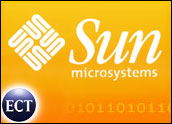

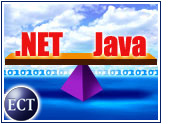




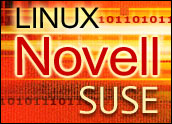
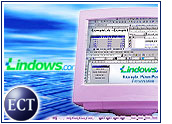
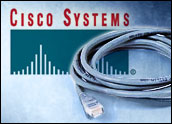
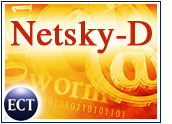











































The Opteron is *not* the first 64-bit Linux-compatible CPU! Linux has run on the 64-bit Alpha for at least a decade, and on 64-bit Sparc since it came out. And better than 90% of Free Software works perfectly fine on any 64-bit architecture.
.
And that’s not to mention OpenBSD, FreeBSD and NetBSD, which all also run on several 64-bit architectures.
.
Proprietary software vendors tend to shoot themselves in the foot. Either they intentionally write code which is 32-bit, or their developers are poor. The C language is more-or-less word size independent. A properly written C program will run on a 32-bit CPU, 64-bit CPU, 128-bit CPU and most often a 16-bit CPU.
.
It is poor craftsmanship to write code which is dependent on the underlying CPU! Apache, MySQL, PostgreSQL, PHP… any prominent Free Software you can think of (and much more you cannot) works just fine on a 64-bit chip, no slower or faster than what the chip is designed to do.
.
In fact, the only assumption many Free Software C developers make is that a byte is 8-bits. Of course, very well written C code will work when a byte is 7-bits or even 16-bits, but even in the free software community those strictures are for niche hardware. (of course, many Free Software applications are mindful of those niches; much FS software will work just fine there)
.
This is yet again another example of why Free Software is of generally higher quality, especially when compared to Wintel software, which lives in a homogenous environment.